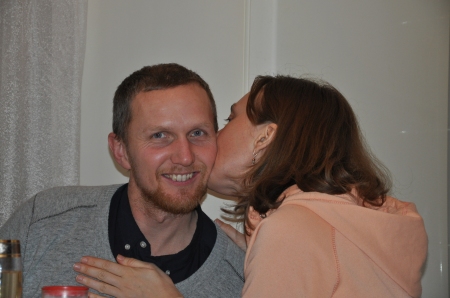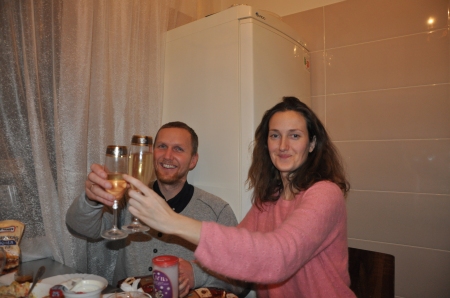In my norwegian blog I have written the text about our celebration of New years eve in the Ukraine. Here are the pictures!
Pictures from Kiev a late winter day
March 5, 2010I use this blog a lot less than my main blog in Norwegian. This means I have a lot of space to catch up with photos, and to-day I will post a few from a walking day in the Ukrainian capital, Kiev.
I post also one of the Mikhailov-church.

This is a picture of the Mikhailsky church. It was demolished by the Soviet communists, and reconstructed in post Soviet times in the nineties.
The pictures are taken with a Nikon N5000. I am an amateur, my camera is new and I don’t quite know the features yet, so don’t blame the camera for my mistakes!
To Kiev I will come
January 26, 2009Yesterday I bought the tickets, in March I will return to Kiev for the forth time in four years. In Norway “to fell in love” is a very strong expression, but I can certainly say I have developed a very true and heartfelt friendship with the city I first visited in the summer of 2007. I stayed there for a week to study Russian at ELC, after a month in Minsk with the same purpose. After the somewhat non-real, weird, strange and strict time at Minsk, it was a relief to come to the chaos and mess and beauty and staggering pulse of the Ukrainian capitol. I lived on the westbank of The Dniepr, and went to the city center from the station Livoberezyna on the red line on the metro. My landlandy gave me more food than even I could eat, something I have never experienced, never before, never after, and my teacher at ELC, made herself my favourite Kievian of all time. She was an excellent teacher, and very friendly and helpful with all kinds of questions and problems. The world needs more of such people!
The last weekend of my stay that time, some of my fellow students and teachers from Minsk – that is, a fellow student, and the one responsible for the cultural program – came to Kiev to visit the city with us. I was there with another Norwegian, no secret his name, Svein, it was, and Odny came, both from Norway, and the girl from Minsk was Natasha. After a nice weekend in the wonderful capitol, we headed to the west in Odny’s car. And I could see that all of the Ukraine was just as beautiful and facinating as her capitol. I certainly should return.
And I did the very same autumn, and made the trip from Odessa to Yalta to Sevastopol to Kiev. Except for Sevastpol, all cities was excellent, and I have some prolems to pull out which city is the best (well – it is Kiev). Sevastopol was also good, with Xerxones right outside the city center, but the beauty of Yalta, and the always fast forward tempo of Kiev, with it’s history and it’s present, it’s chaos and it’s street life, it’s park life, restaurant life, pure life.
So I returned another time the winter to follow, and for the first time I saw a city from the former Russian empire in Winter. The winter was far from severe, the first night it was below 6, I think, but the rest of my stay it was not freezing at all. There was some snow, but not much, it was just beautiful.
Therefore, I decided to go there again. And yesterday I bought the ticket. From 27’th of Februay to 9’th of March, it will be. I hope I get to talk to a lot of people, this time, and that I will improve my Russian, and just have a great stay as I always have there.


















 Posted by esalen
Posted by esalen 



